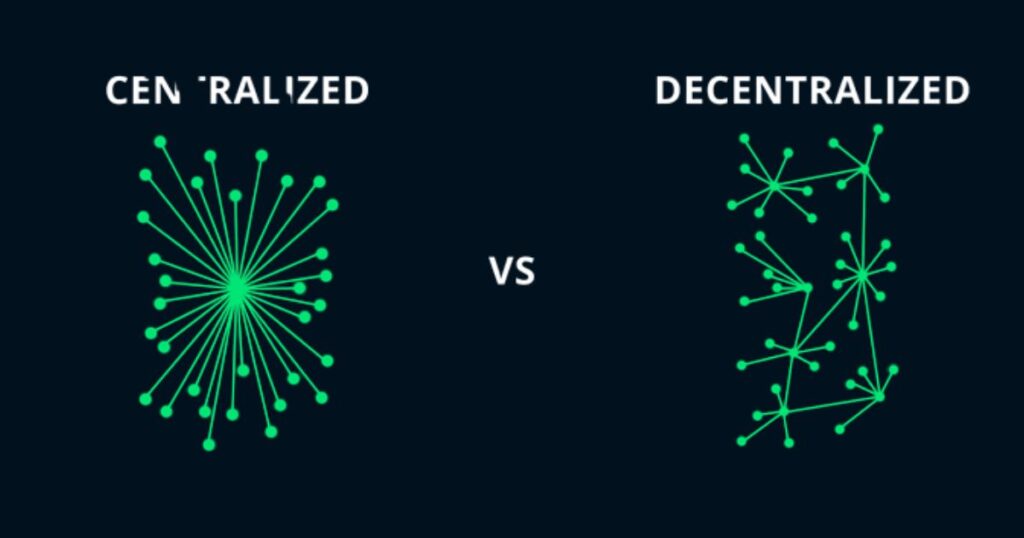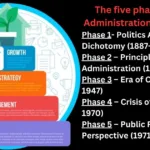If you’re interested in rural development, you might have come across Mahatma Gandhi’s Theory of Gram Swaraj. Gram Swaraj, also known as Village Self-Rule, was Gandhi’s vision for rural India.
Gandhi believed that India’s rural areas were crucial to its economic and social development. He saw Gram Swaraj as the key to unlocking their potential. This theory is still relevant today, as many countries struggle with rural poverty and underdevelopment.
Key Takeaways
- Mahatma Gandhi’s Theory Of Gram Swaraj is a philosophy that advocates for self-governance in rural areas.
- Gandhi’s vision for rural India emphasizes community-driven development and local self-sufficiency.
- The Gandhian Model of Rural Development promotes decentralization and empowerment in rural areas.
The Philosophy Behind Gram Swaraj
If you want to understand Mahatma Gandhi’s Theory of Gram Swaraj, it’s important to first understand the philosophy behind it. At the core of this theory is the belief in self-governance in rural areas. Gandhi believed that people should have the power to govern themselves and participate in decision-making processes that affect their lives.
This philosophy is based on the principle of decentralization, which means that power and decision-making should be spread out among local communities. This empowers people to take ownership of their own development and avoid having decisions made for them by distant authorities who may not understand their needs.
The goal of Gram Swaraj is to create a system of governance where people are not only involved in the democratic process but are also able to shape it. This means that people are not just voting for representatives, but they are actively participating in the governance process. They have a voice in deciding what their communities need and how to achieve it.
Empowerment is another key part of Gandhi’s philosophy. He believed that people should not only have a say in governance but also have control over their own lives. This means that people should be empowered to make decisions that affect their own lives and take control of their own futures.
In all, the philosophy behind Gram Swaraj is one of decentralization, empowerment, and people’s participation in governance. By decentralizing power and empowering local communities, people are better able to shape their own future and create sustainable development that meets their specific needs.
Gandhi’s Vision for Rural India

Mahatma Gandhi’s vision for rural India was grounded in the belief that community-driven development and local self-sufficiency were key to achieving sustainable rural development. Gandhi believed that rural areas had the potential to thrive economically and socially if given the opportunity to govern themselves.
He envisioned a society where people in rural areas had access to basic amenities and enjoyed a decent quality of life. His vision emphasized the importance of local self-sufficiency, where people could meet their basic needs without dependence on external factors.
Gandhi recognized that community-driven development was crucial to achieving this vision. He believed that local communities should be empowered to identify and address their own developmental challenges. Gandhi’s vision was founded on the principle of Swaraj or self-rule, where people had control over their own lives and their own destinies.
According to Gandhi, true Swaraj could only be achieved by empowering local communities and ensuring that they had the resources and support they needed to create sustainable economic and social systems. The concept of Gram Swaraj, or village self-rule, encapsulated Gandhi’s philosophy of rural development.
Gandhi’s vision for rural India was characterized by a strong emphasis on local governance and community-driven development. He believed that the development of rural areas could not be left solely to external agencies and that local communities should take ownership of their own development. Through his theory of Gram Swaraj, Gandhi advocated for the devolution of power to local communities and the promotion of local self-governance to achieve sustainable rural development.
The Gandhian Model of Rural Development
Mahatma Gandhi’s theory of Gram Swaraj advocates for rural self-rule and local governance and development. It is based on the philosophy of Indian self-rule, emphasizing the importance of decentralization and empowering local communities.
The Gandhian model of rural development focuses on empowering rural communities to become self-sufficient and self-governing. Central to this ideology is the belief that local governance is the key to economic development and social progress.
| Rural Self-Rule | Local Governance and Development | Indian Self-Rule Philosophy |
|---|---|---|
| Rural self-rule is the cornerstone of Gram Swaraj. It refers to the empowerment of rural communities to govern themselves and make decisions that benefit their collective welfare. | Local governance and development are essential for the economic and social progress of rural areas. By devolving power to local communities, Gandhi believed that they could become self-sufficient and drive their own development. | Indian self-rule philosophy is based on the idea that India should be governed by Indians. Gandhi believed that this philosophy could be applied at the local level, with rural communities taking charge of their own development. |
The Gandhian model rejects the top-down approach to development, which emphasizes the role of the state and outside agencies. Instead, it advocates for a community-driven approach that prioritizes the needs and aspirations of rural communities.
The Gandhian model of rural development recognizes that rural areas have unique challenges and opportunities that require a tailored approach. It is a holistic and sustainable model that seeks to address the economic, social, and cultural aspects of rural life.
By promoting rural self-rule, local governance and development, and the philosophy of Indian self-rule, Mahatma Gandhi’s theory of Gram Swaraj offers a unique approach to rural development that remains relevant today.
Empowering Local Communities
One of the core tenets of Mahatma Gandhi’s Theory of Gram Swaraj is the emphasis on empowering local communities in order to achieve sustainable rural development. This involves granting village autonomy and developing community-driven approaches to development, where local people are actively involved in the decision-making processes that affect their lives.
This approach to development recognizes the importance of empowering local communities to take charge of their own economic and social well-being. With greater control over their own resources and decision-making processes, rural communities are better equipped to identify and pursue their own development goals.
At the heart of this philosophy is the concept of sustainable rural development, which seeks to create long-term solutions to the challenges facing rural communities. By emphasizing village autonomy and encouraging community-driven development, Gandhi’s Theory of Gram Swaraj provides a roadmap for achieving sustainable rural development.
Ultimately, the success of this approach hinges on empowering local communities and ensuring that they have the resources and support they need to thrive. By creating a system of governance that prioritizes the needs and aspirations of rural people, we can build a more just and thriving society that benefits all.
The Role of Decentralized Governance

In Gandhi’s theory of Gram Swaraj, the concept of decentralized governance plays a critical role in achieving rural economic upliftment and political self-sufficiency. This model emphasizes the importance of devolving power to local communities and fostering a sense of ownership and responsibility for local governance and development.
The Gandhian Model of Rural Development envisions a system of local self-rule, where communities have the power to make decisions and implement policies that align with their unique needs and priorities. This approach recognizes that communities are best equipped to identify and address their own challenges, and that centralizing power can often lead to ineffective policies and neglect of rural areas.
| Benefits of Decentralized Governance | Examples of Decentralized Governance |
|---|---|
| Empowerment of local communities: Communities have the power to design and implement policies that reflect their unique needs and values. | Panchayati Raj System: A decentralized system of governance in India that empowers local communities to make decisions on issues such as healthcare, education, and rural development. |
| Faster decision-making: Decisions can be made quickly at the local level, without the need for time-consuming bureaucratic procedures. | Participatory budgeting: An approach to budgeting that involves direct participation from residents in allocating resources and prioritizing projects in their community. |
| Greater accountability: Local officials are more accountable to their constituents, as they are directly elected and have a greater stake in their community’s success. | Community-led development initiatives: Programs and projects that are designed and implemented by local communities, with support from government and non-governmental organizations. |
Decentralized governance can lead to sustainable rural development, as it allows for a more tailored and community-driven approach to development. When communities have greater control over their own resources and decision-making processes, they are more likely to invest in their own development and work towards long-term growth and self-sufficiency.
In conclusion, the Gandhian Model of Rural Development prioritizes the empowerment of local communities through decentralized governance. By giving communities the power to make their own decisions, this model seeks to foster a sense of ownership and responsibility for local governance and development, and ultimately achieve rural economic upliftment and political self-sufficiency.
Grassroots Democracy in Action
One of the fundamental principles of Mahatma Gandhi’s Theory of Gram Swaraj is the empowerment of local communities. This emphasis on rural empowerment and grassroots democracy has led to numerous successful examples of community-driven development.
In India’s Maharashtra state, the village of Hiware Bazar has become a shining example of rural self-rule in action. Led by a dynamic leader, the village has transformed from a drought-prone and poverty-stricken community to a prosperous and self-sufficient one. Through citizen participation and local governance, Hiware Bazar has achieved water conservation, irrigated agriculture, and sustainable farming practices, all while fostering a sense of community ownership and responsibility.
Another successful example of grassroots democracy can be found in the Indian state of Kerala, where the Kudumbashree movement promotes women’s empowerment and poverty reduction through community-based initiatives. By providing training and resources to women’s self-help groups, Kudumbashree has empowered women to take charge of their own economic and social well-being. This has resulted in a variety of successful community development projects, including microfinance, sustainable agriculture, and healthcare initiatives.
Such examples of successful rural empowerment and grassroots democracy demonstrate the potential for sustainable development through the application of Mahatma Gandhi’s Theory of Gram Swaraj. By empowering local communities and promoting citizen participation in governance, rural areas can thrive economically and socially, creating a better future for all.
Towards Sustainable Development
By promoting community-driven development and rural self-rule, Mahatma Gandhi’s theory of Gram Swaraj aims towards achieving sustainable rural development. Through this model, local communities are empowered to take ownership of their own development and ensure their needs and priorities are met. This approach promotes the use of local resources and knowledge to foster self-sufficiency and economic growth.
Community-driven development emphasizes the involvement of local people in decision-making processes and the implementation of development projects. This allows for greater accountability and transparency, as well as a more targeted approach to meeting community needs. By prioritizing the participation of local communities in development initiatives, progress can be made in a way that is sustainable and inclusive.
Rural self-rule, as advocated by Gandhi’s theory, emphasizes the importance of local governance and decision-making. By devolving power to local communities, each community can determine their own development path and ensure their unique needs are met. This promotes the creation of locally-responsive policies and programs that promote economic growth and social well-being.
Conclusion
In conclusion, Mahatma Gandhi’s Theory of Gram Swaraj remains relevant in today’s context, where sustainable rural development is an ongoing challenge. Gandhi’s philosophy, emphasizing self-governance, people’s participation in governance, and the importance of decentralization and empowerment, provides a roadmap for achieving rural self-sufficiency and political self-rule.
The Gandhian Model of Rural Development, which promotes community-driven development and local governance, can empower local communities and achieve sustainable rural development. By devolving power to local communities, decentralized governance can lead to rural economic upliftment and grassroots democracy in action.
The examples of success stories of rural empowerment through the implementation of Gandhi’s theory of Gram Swaraj showcase the potential of community-driven development and rural self-rule. Adopting Gandhi’s theory can help achieve sustainable rural development and promote village autonomy.
FAQ
Q: What is Mahatma Gandhi’s Theory Of Gram Swaraj?
A: Mahatma Gandhi’s Theory Of Gram Swaraj is a concept that advocates for self-governance and empowerment in rural areas. It emphasizes the importance of local communities and their active participation in governance and decision-making processes.
Q: What is the philosophy behind Gram Swaraj?
A: The philosophy behind Gram Swaraj revolves around the principles of self-governance, people’s participation in governance, and the decentralization of power. It aims to empower rural areas and foster community-driven development.
Q: What was Gandhi’s vision for rural India?
A: Mahatma Gandhi envisioned rural India as a self-sufficient and vibrant community. He believed in the potential of rural areas to thrive economically and socially through community-driven development and local self-sufficiency.
Q: What is the Gandhian Model of Rural Development?
A: The Gandhian Model of Rural Development is based on the principles of rural self-rule and local governance. It promotes the idea of Indian self-rule and the empowerment of local communities in achieving sustainable development.
Q: Why is empowering local communities important?
A: Empowering local communities is crucial in achieving sustainable rural development. It fosters village autonomy and allows for the active participation of community members in decision-making processes, ultimately leading to self-sufficiency and growth.
Q: What role does decentralized governance play in rural development?
A: Decentralized governance plays a significant role in rural development by devolving power to local communities. It enables political self-sufficiency and facilitates the implementation of grassroots initiatives, leading to economic upliftment and improved governance.
Q: Can you provide examples of grassroots democracy in action?
A: Yes, examples of grassroots democracy in action include successful projects and initiatives that have empowered rural communities. These initiatives have allowed community members to actively participate in decision-making processes and achieve positive changes in their local areas.
Q: How does Mahatma Gandhi’s theory contribute to sustainable development?
A: Mahatma Gandhi’s theory of Gram Swaraj contributes to sustainable development by promoting community-driven development and rural self-rule. By empowering local communities and fostering self-sufficiency, it paves the way for sustainable economic, social, and environmental growth.
Q: What is the significance of Mahatma Gandhi’s theory of Gram Swaraj in today’s context?
A: Mahatma Gandhi’s theory of Gram Swaraj remains significant in today’s context as it provides a framework for sustainable rural development, community empowerment, and grassroots democracy. It serves as a guiding principle for addressing contemporary challenges and achieving inclusive growth.
You Can Read: Mahatma Gandhi’s Satyagraha
You Can Read : Mahatma Gandhi’s Truth and Non-Violence: A Powerful Roadmap











